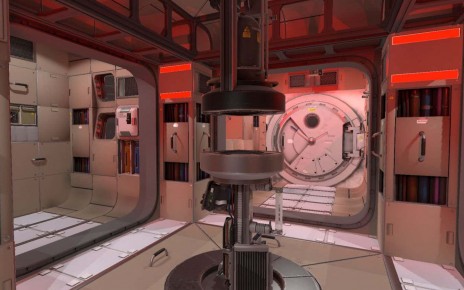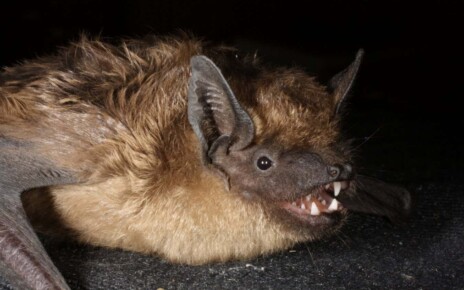[ad_1]
Mark Cousins has an eye for making innovative films Bofa Productions 
The Story of Looking
Mark Cousins
In cinemas from 17 September
NOT long before I watched The Story of Looking, I was shown an image of the inside of my eye. At my annual sight check-up, I’d agreed to something called an optical coherence tomography scan, examining the surface of my retina for abnormalities.
One picture resembled a red sun, lined with veins; the cross-section view revealed undulating layers like those of Earth’s crust. I looked at my eye, and my eye looked back. Thinking about it, I started to feel a little queasy. It is this visceral, charged relationship between being and seeing – how what we take in of the world shapes our understanding of it – that Mark Cousins explores in his personal, exploratory film.
The Story of Looking extends his 2017 book of the same name to bring together medium and message, as he did a decade ago with The Story of Film: An Odyssey, his 15-hour epic on the history of cinema. At 90 minutes long, his new offering is relatively glancing, but in some ways just as ambitious in attempting to tell “the story of our looking lives”.
The film begins with a clip of musician Ray Charles, who went blind aged 7, being interviewed on The Dick Cavett Show in the US in 1972. Given the option, he would refuse to have his sight permanently restored, but might consider it for one day, he says. “There are a couple of things that I would maybe like to see, once.”.
The idea that a person might choose not to see floors Cousins, as “somebody who has always loved looking”. He makes sense of his life through visual markers – some undeniable, such as the sight of his late grandmother in an open coffin, but many more apparently inconsequential: a sunrise, a tree outside his bedroom window, a glimpse of his neighbour.
But the ephemeral nature of this “visual world” was thrown into relief by his discovery, during lockdown last year, of a cataract in his left eye. The parallel between the pandemic curtailing his experience and the potential of his failing vision to do the same isn’t lost on Cousins, who sets out to capture what sight has meant to him. “Where do I begin to tell the story of my looking?” he wonders on the day before cataract surgery.
“Why do I take selfies? Why has that tree, that panorama, that particular image stayed with me for years?”
Inspired by the artist Paul Cézanne’s description of his developing “optical experience”, Cousins traces his own, starting with his earliest memories – by extension, his earliest sights. The intimacy of this is emphasised by our own view of Cousins, shirtless in bed, curtains drawn: shut inside with him, we see what he sees, if only in his mind’s eye. He even projects into the future, beyond his surgery, to bring this “journey through our visual lives” full circle.
The Story of Looking is essayistic in form, even impressionistic, combining personal experience, wide-ranging references and globe-trotting footage from Cousins’s archives to create a kaleidoscopic picture.
Some of this, such as Cousins reading aloud responses to his tweeted request for thoughts on looking, isn’t that captivating to watch. But the evocativeness of his followers’ words, and Cousins’s emotional response to them – especially at a time of enforced isolation – underscores his point: we don’t need to be present, or together, to see for ourselves.
Likewise, if the film’s meditative pace sometimes fails to hold the attention, it feels like an extension of Cousins’s challenge to our preconceptions – of what we consider to be “worth seeing”, or what we believe we must “bear witness” to. “Blurs are failures, aren’t they?” he says, of his cataract.
Just as the film-maker’s looming surgery causes him to reflect on what he has seen, “to go around the city for a day with my eyes wide open”, The Story of Looking prompts me to see my own “visual world” anew. Why do I take selfies? Why has that tree, that panorama, that particular image stayed with me for years?
The effect is oddly uplifting, as though my own aperture has been enlarged. Indeed, it casts the news that I need a first pair of prescription glasses in a new light – as another chapter in my own story of looking.
More on these topics:
[ad_2]
Source link




